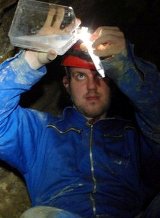Chemostat Culture Methods
This section is under construction (July 2010)
Use of continuous culture of micro-organisms in a steady-state limited by energy source (i.e. chemostat culture) seems to be something of a dying art in the 21st century. I have used chemostat culture extensively during my research but found it difficult at first to learn since there are no readily available practical texts on the subject. There are plenty of books and reviews on the mathematics and theory, but virtually nothing exists in terms of the practicalities of setting up and maintaining a chemostat. Owing to this, I decided to put together something here as a resource for others wishing to use these methods. For some reason, there seems to be a misconception that chemostat culture is "difficult" and/or "troublesome" - in fact, it is quite the opposite and can be an easy way of generating data on the growth of an organism. It can also be used to generate large amounts of biomass for, for example, protein purification.
Contents
1. Chemostat overview - An overview of chemostat culture and what you can and cannot do with it.
2. Theoretical basis - Monod and Pirt kinetics of basic single-substrate chemostat culture.
3. Practical considerations - How to ensure you get the most out of a chemostat.
4. Starting and maintaining chemostat cultures - How to initiate, equilibrate and maintain a chemostat.
5. Growth kinetics - How to measure biomass and substrates and how to calculate Y and determine μmax.
6. Glossary of terms - A reminder of symbols and terminology.

Rich Boden
Rich dot Boden at warwick dot ac dot uk

